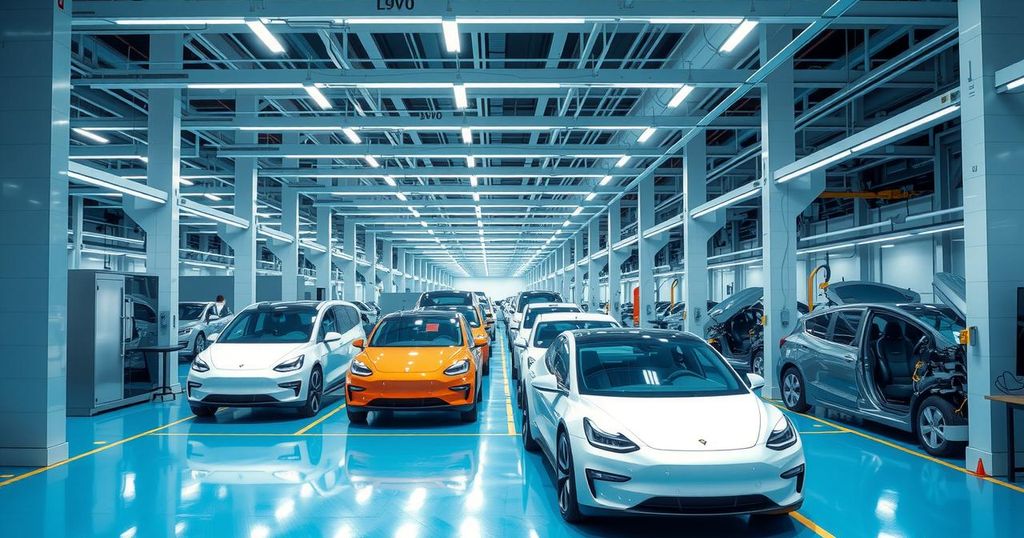Chinese Carmakers Shift Focus to Malaysia Amid Tariff Challenges

Chinese automakers are shifting focus to Malaysia and Southeast Asia to bypass high tariffs in the US and Europe, enhancing the local automotive market with affordable EV options. Companies like BYD and Chery are successfully competing against established brands, while the region seeks to balance attracting investment with protecting domestic industries amidst rising competition and evolving trade dynamics due to US-China tensions.
Chinese automakers are shifting their focus toward tariff-friendly regions, particularly Southeast Asia, with Malaysia emerging as a key target due to high tariffs in markets like the US and Europe. This change is expected to result in increased imports of Chinese vehicles and components at more competitive prices, benefiting consumers with affordable options and advanced electric vehicle (EV) technology while intensifying competition for both domestic and international brands in Malaysia. Brands such as BYD and Chery are already making significant inroads against established Japanese and European manufacturers in the region.
The migration of Chinese car manufacturers to Southeast Asia aligns with established industrial trends seen across various sectors, including electronics. Notably, SAIC Motor inaugurated a $310 million factory near Bangkok in 2018, representing a significant Chinese automotive production site in Thailand. This strategic move has allowed MG to outperform competitors like Suzuki within a mere nine months of entering the market. Similarly, BYD and Chery have rapidly gained market share in Malaysia, with Chery emerging as the third best-selling non-national brand within 18 months, highlighting the effectiveness of this manufacturing strategy.
As Thailand and Malaysia vie to become leading electrical vehicle manufacturing hubs for a market of approximately 550 million consumers, they are tasked with attracting Chinese investment while safeguarding their domestic automotive sectors. Malaysia’s Perodua, for instance, maintains a competitive edge through affordable offerings and robust local content, which mitigates risks from currency fluctuations and variations in import costs. Currently, Chinese manufacturers dominate the region’s electric vehicle market, accounting for 75% of sales in early 2024, contributing to tough competition that resulted in a 2.3% sales drop for non-national automakers, even as the market overall grew by 20.6%.
Heightened US-China trade tensions have positioned Southeast Asia as a viable alternative manufacturing hub, as businesses increasingly seek to diversify their supply chains. Trade between China and the ASEAN countries has surged from $40 billion in 2000 to a projected $1 trillion by 2020, leading to substantial economic interdependence. Industry analysts caution that redirected Chinese goods could inundate Southeast Asian markets, especially as tariffs potentially impact up to 80% of materials used in critical sectors such as data centers. Recent diplomatic initiatives by Xi Jinping, including substantial projects like an $8.3 billion railway in Vietnam, illustrate China’s aim to enhance strategic ties with these nations amid ongoing trade complications.
The automotive landscape serves as a clear example of this evolving trade dynamic, with electric vehicle manufacturers like BYD, NIO, and XPeng actively entering Southeast Asian markets to circumvent barriers in the US. In the face of these complexities, ASEAN countries are promoting intra-regional cooperation, aiming to capitalize on manufacturing shifts while reducing economic instability in the region.
Chinese car manufacturers are increasingly looking towards Southeast Asia, particularly Malaysia, to mitigate tariff-related challenges while expanding their market share. This shift is supported by a long-standing trend of relocating manufacturing operations to optimize access to emerging markets. As competition intensifies with Chinese brands dominating the EV market, Southeast Asian nations are navigating the fine line between attracting foreign investment and protecting local industries. Potential opportunities emerging from US-China trade tensions further make Southeast Asia an attractive manufacturing alternative for the future.
Original Source: www.techinasia.com




